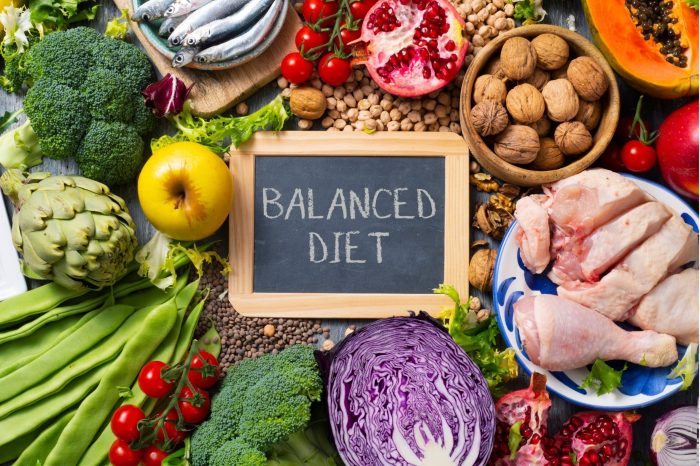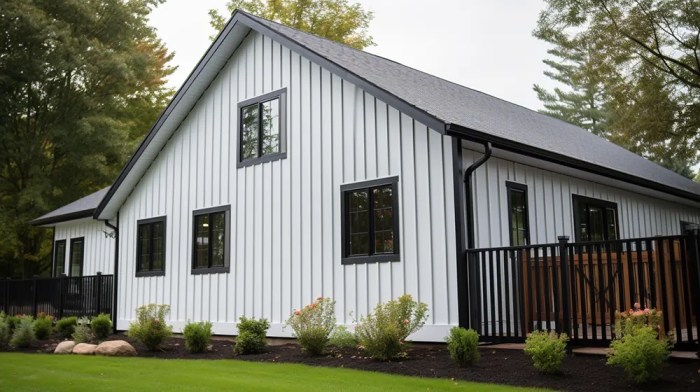Balancing Nutrition and Budget for Long-Term Wellness: A Guide to Healthier Choices
Embarking on the journey of Balancing Nutrition and Budget for Long-Term Wellness, we delve into the intricate relationship between what we eat and how it impacts both our health and financial well-being. Exploring the fine line between nutritious eating and budget constraints, this guide aims to shed light on practical strategies for a healthier and wealthier lifestyle.
Importance of Balancing Nutrition and Budget for Long-Term Wellness
Ensuring a balance between nutrition and budget is essential for maintaining long-term health and well-being. Making informed choices about what we eat not only impacts our physical health but also has a significant effect on our financial stability in the long run.
Impact of Poor Nutrition Choices
Poor nutrition choices can have detrimental effects on both our health and budget over time. Consuming unhealthy, processed foods high in sugar, salt, and saturated fats can lead to various health issues such as obesity, heart disease, and diabetes. These conditions often require costly medical treatments and medications, adding financial burden in the long term.
Benefits of Investing in Nutritious Foods
Investing in nutritious foods, such as fresh fruits and vegetables, whole grains, and lean proteins, can bring about numerous benefits for our overall health and financial well-being. A diet rich in essential nutrients can help prevent chronic diseases, boost immunity, and improve energy levels, ultimately reducing healthcare costs and enhancing productivity in the long term.
Additionally, opting for homemade meals over fast food or takeout can lead to significant savings and contribute to better financial planning.
Strategies for Eating Healthy on a Budget

Eating healthy doesn't have to break the bank. By implementing smart strategies, you can enjoy nutritious meals while staying within your budget. Here are some tips to help you plan meals that are both nourishing and cost-effective.
Affordable Sources of Key Nutrients
When looking to save money while eating healthy, it's important to identify affordable sources of key nutrients. Here are some budget-friendly options for protein, fruits, vegetables, and whole grains:
- Protein: Opt for affordable protein sources such as beans, lentils, eggs, canned tuna, and chicken thighs. These options provide essential amino acids without costing a fortune.
- Fruits: Choose seasonal fruits and frozen options, which tend to be more budget-friendly than fresh produce. Apples, bananas, oranges, and frozen berries are great choices that won't break the bank.
- Vegetables: Stock up on frozen vegetables, which are just as nutritious as fresh ones and often more affordable. Cabbage, carrots, broccoli, and spinach are versatile options that are gentle on your wallet.
- Whole Grains: Look for whole grains in bulk, such as brown rice, quinoa, oats, and whole wheat pasta. Buying in bulk can save you money in the long run while providing essential nutrients like fiber and vitamins.
Meal Prep and Batch Cooking
Meal prep and batch cooking are effective strategies to save money and time while eating healthily. By preparing meals in advance, you can avoid costly takeout or dining out. Here are some tips for meal prep and batch cooking:
- Plan your meals for the week ahead, including breakfast, lunch, dinner, and snacks. This will help you stay organized and avoid last-minute temptations to order food.
- Cook large batches of meals and portion them out for the week. This not only saves money but also ensures you have nutritious meals ready to go when you're short on time.
- Invest in reusable containers to store your prepped meals. This will help you portion out servings and keep your food fresh for longer, reducing waste and saving money in the process.
Making Informed Food Choices
Making informed food choices is essential when trying to balance nutrition and budget for long-term wellness. By understanding how to read food labels, comparing costs and nutritional values of different options, and choosing budget-friendly snacks, you can make healthier choices without breaking the bank.
Reading Food Labels
When shopping on a budget, it's important to know how to read food labels to make informed decisions. Look for key information like serving size, calories, fat, sugars, and ingredients. Pay attention to the order of ingredientsthe first few listed make up the majority of the product.
Watch out for hidden sugars and unhealthy fats, and opt for products with shorter ingredient lists and recognizable ingredients.
Fresh Produce vs. Canned or Frozen Options
Fresh produce is often perceived as expensive, but it can actually be more budget-friendly than canned or frozen options in the long run. While canned and frozen fruits and vegetables can be convenient and have a longer shelf life, they may contain added sugars, salts, or preservatives.
Fresh produce, on the other hand, is nutrient-dense and can be more cost-effective when in season or purchased from local markets. Consider buying in bulk, freezing excess fresh produce, or opting for store-brand canned or frozen options to save money while still getting essential nutrients.
Choosing Healthy Snacks
Snacking can quickly add up in expenses and empty calories if you choose processed options. Opt for budget-friendly, healthy snacks like fruits, vegetables, nuts, seeds, yogurt, or whole-grain crackers. These options are not only more nutritious but also more filling and satisfying than processed snacks.
Look for sales, discounts, or bulk options to save money on healthier snack choices that will support your long-term wellness goals.
Budget-Friendly Recipe Ideas
Incorporating budget-friendly recipes into your meal planning can help you save money while still enjoying nutritious and delicious meals. By utilizing simple ingredients and cost-effective cooking methods, you can maintain a healthy diet without breaking the bank.
Simple and Nutritious Recipes
- One-Pot Pasta Primavera: Combine whole wheat pasta, assorted vegetables, and a homemade tomato sauce for a flavorful and filling dish.
- Vegetable Stir-Fry with Brown Rice: Use a variety of fresh or frozen vegetables and tofu or chicken for a protein-packed meal that is quick to prepare.
- Black Bean and Sweet Potato Tacos: Roasted sweet potatoes, black beans, and taco seasoning wrapped in corn tortillas make for a satisfying and budget-friendly dinner option.
Repurposing Leftovers and Bulk Cooking
- Leftover Vegetable Soup: Combine any leftover vegetables, beans, and grains with broth for a hearty and nutritious soup that minimizes food waste.
- Bulk Overnight Oats: Prepare a large batch of overnight oats with oats, milk, yogurt, and fruit for a grab-and-go breakfast option that can be customized to your taste.
- Freezer-Friendly Casseroles: Make casseroles with ingredients like rice, beans, vegetables, and cheese that can be portioned out and frozen for convenient meals throughout the week.
Final Conclusion
In conclusion, Balancing Nutrition and Budget for Long-Term Wellness is not just about what's on your plate, but also about what's in your wallet. By making informed food choices, planning budget-friendly meals, and embracing the benefits of nutritious eating, you pave the way for a sustainable and fulfilling lifestyle.
Here's to a healthier you and a happier bank account!
FAQs
Can eating healthy be affordable?
Yes, eating healthy can be affordable by planning meals, buying in bulk, and choosing seasonal produce.
How can I save money on nutritious foods?
You can save money on nutritious foods by opting for store brands, buying frozen fruits and vegetables, and looking for sales and discounts.
Is meal prepping really cost-effective?
Meal prepping can be cost-effective as it helps in reducing food waste and allows you to plan your meals ahead of time.
What are some budget-friendly snack options?
Budget-friendly snack options include popcorn, nuts, yogurt, and homemade energy bars.



